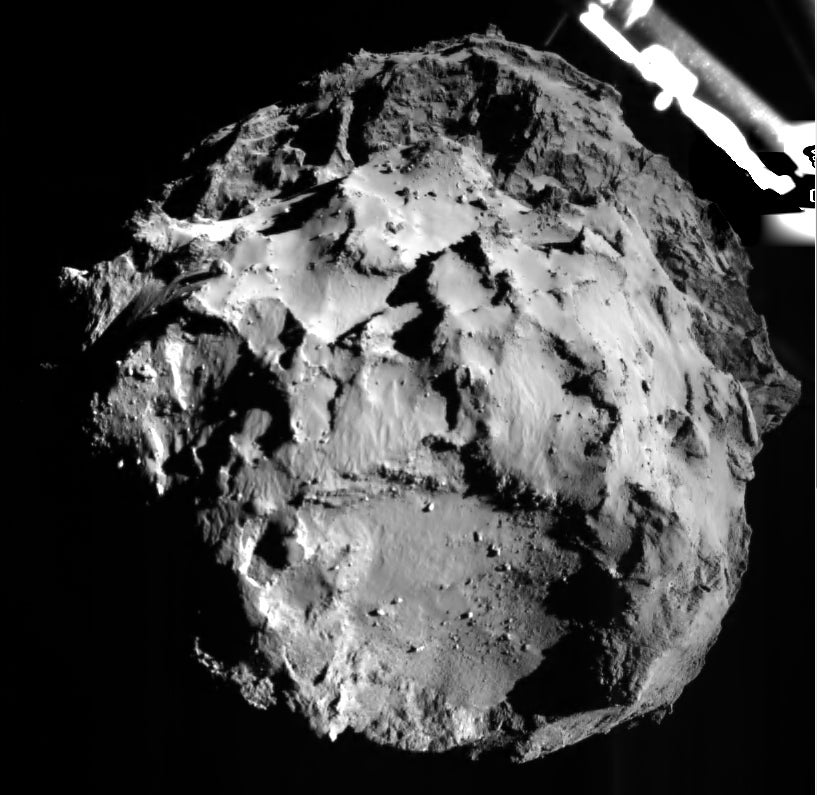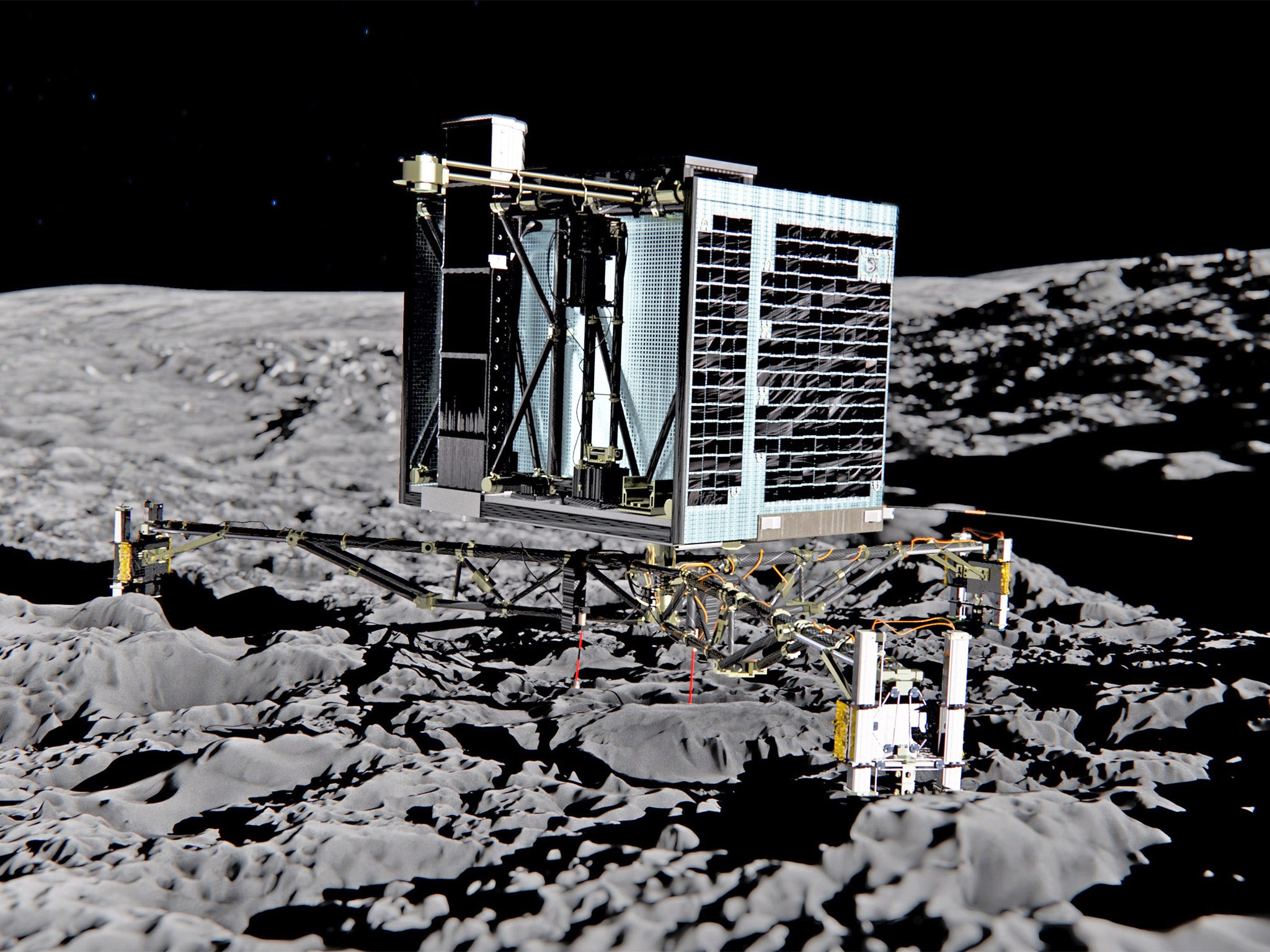Rosetta mission: why did Philae bounce?
Weak gravity and misfiring harpoons are the main reasons - but the lander is safe on the surface now (if maybe not so secure)

Your support helps us to tell the story
From reproductive rights to climate change to Big Tech, The Independent is on the ground when the story is developing. Whether it's investigating the financials of Elon Musk's pro-Trump PAC or producing our latest documentary, 'The A Word', which shines a light on the American women fighting for reproductive rights, we know how important it is to parse out the facts from the messaging.
At such a critical moment in US history, we need reporters on the ground. Your donation allows us to keep sending journalists to speak to both sides of the story.
The Independent is trusted by Americans across the entire political spectrum. And unlike many other quality news outlets, we choose not to lock Americans out of our reporting and analysis with paywalls. We believe quality journalism should be available to everyone, paid for by those who can afford it.
Your support makes all the difference.As the dusts settles (quite literally) around the landing of the Philae probe, scientists have confirmed that craft didn’t touch down just once – it actually bouncedon the surface of the comet twice.
But what’s happening here? Since when did spacecraft bounce?
Well, it’s all down to the comet's gravity. 67P/Churyumov-Gerasimenko may be an icy mass the size of a mountain, but gravity is an incredibly weak force (you overcome it every time you get out of bed in the morning) and it only really becomes noticeable with huge, planetary masses.
The comet's gravity is actually several hundred thousand times weaker than that on Earth and, to make matters worse, the uneven shape of the comet means that even this force varies over its surface.
Its gravity is so weak that scientists working on the Philae lander had to take account of the fact that even the slightest movement on the craft – say, adjusting a camera to look left or right – could be enough to lift it off the surface.

To compensate for this they put thrusters on the top of the craft to push it into the surface (unlike the Curiosity rover which had thrusters on the bottom to stop it from slamming into Mars) as well as pair of harpoons and three ice screws to secure it in place once it was near enough.
Unfortunately, this is where things went wrong: the thrusters and harpoons failed for unknown reasons and consequently Philae rebounded.
Not hard (the craft was only travelling at a leisurely one metre per second) but enough to keep it airborne for several hours -imagine the lander barely moving as it floats hundreds of metres above the surface, attached by only a thin thread of gravity.
Thankfully, however, Philae has now definitely landed, although there’s still some concern about its long term prospects without harpoons to secure it in place.
"We are sitting with the weight of the lander somehow on the comet,” said Philae project manager Stephan Ulamec. “We are pretty sure where we landed the first time, and then we made quite a leap. Some people say it is in the order of 1 km high."
Join our commenting forum
Join thought-provoking conversations, follow other Independent readers and see their replies
Comments